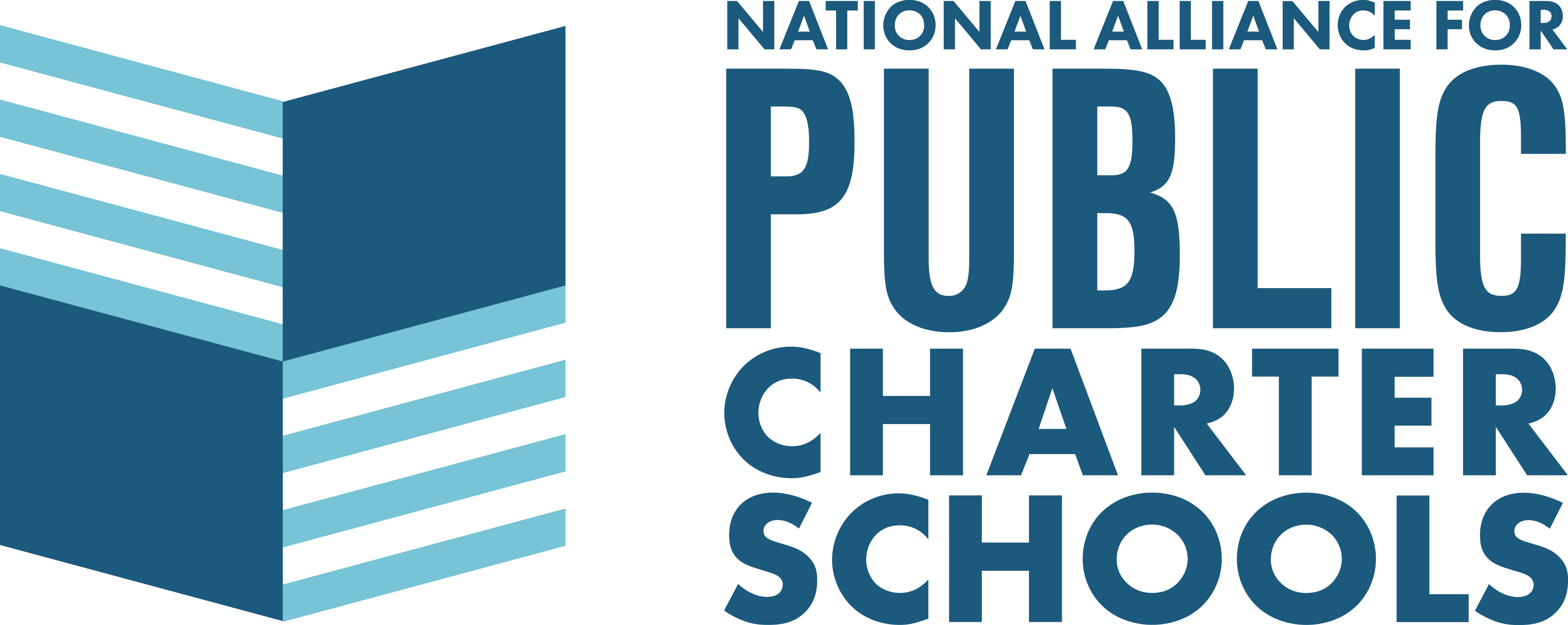5. How Are Charter Schools Managed?
Top Takeaways
- More than half (56.4%) of all charter schools are self-managed
- More than half (50.7%) of all charter school students are enrolled in freestanding schools
- Most CMO-managed and freestanding charter schools are in urban areas
- CMO-managed schools enroll the highest share of Black and Hispanic students (76%) across management types
- EMO-managed schools enroll the smallest proportion of charter students (17%) yet are the fastest growing management type
Management Organizations by State
Note: Data comes from 2023-24 and depicts the management organization types present in the state at that time. This map does not depict all the management types permitted under state law, only those operating in 2023-24. Montana, North Dakota, South Dakota, Nebraska, Kentucky, and Vermont did not have any charter schools in the 2023-24 school year.
Most charter schools manage themselves.
- In 2023-24, 56.4% of all charter schools are categorized as freestanding, meaning they manage school operations themselves.
- 43.6% of charter schools contract with external organizations (CMO and EMO) for management-related services.
Behind the Scenes: The Structures That Drive Charter School Operations
At the National Alliance, we have identified three unique management structures for charter schools: freestanding, CMO management, and EMO management. The two types of management organizations are charter management organizations (CMOs) and education management organizations (EMOs). The National Alliance considers an organization to be a management organization if it: (1) manages at least three schools, (2) serves a minimum of 300 students, and (3) is a business entity separate from the schools it manages. Our rationale for setting the threshold at three and not two schools is to avoid mistakenly classifying an entity that serves two campuses within the same school, as a management organization.
These management organizations help schools with a variety of tasks and operations, including but not limited to staffing, curriculum, services for students with disabilities, facilities, and back-office support, just like a district school may contract a third-party for these same services. Management structures and the relationships these external partners have with their schools vary considerably. In some cases, the management organizations provide limited services; in other cases, they may provide nearly all management-related services and directly hire educational staff. CMOs manage 31.3% of charter schools nationwide, while EMOs manage 12.3% of charter schools.
Table 5.1: Charter Management Organization Share
CMOs far outnumber EMOs: there are 301 CMOs compared to 50 EMOs. However, CMOs tend to be much smaller organizations.
- Proportionally more CMOs operate five or fewer schools (61.5%) than EMOs that operate five or fewer schools (36%).
- Very large organizations are more prevalent among EMOs, with approximately 16% of EMOs managing 26 or more charter schools, whereas only 5.3% of CMOs operate 26 or more charter schools.
- EMOs manage 28.5% of virtual charter schools and 40.9% of virtual school students attend these schools.
More about CMOs:
CMOs are nonprofit organizations. Schools working with these organizations often appear as unified networks with similar missions, educational models, and curriculum. However, this is not always the case, as some CMOs manage schools with more diverse models and curricula.
More about EMOs:
EMOs are management organizations with a for-profit tax status, although it is incorrect to label the public schools that contract with them as “for-profit.” One organization, Academica, manages 21.3% of these schools, making it the largest EMO operator by a significant margin.
Overall, CMOs tend to be smaller organizations than EMOs. Proportionally more CMOs operate five or fewer schools (61.6%) than EMOs that operate five or fewer schools (33.3%). Very large organizations are more prevalent among EMOs. Approximately 16.7% of EMOs manage 26 or more charter schools, whereas only 5.2% of CMOs operate 26 or more charter schools. EMOs manage 28.5% of virtual charter schools and 40.9% of virtual school students attend these schools.
A further note on EMOs: Both charter schools and district schools contract with for-profit educational service providers and EMOs for a wide range of services. A new charter school governing board that wants to partner with an EMO for a new school applies to an authorizer for a charter. If the authorizer approves the application, the board enters into a contract with the EMO to manage or provide other services for the school. Many EMOs serve as vendors for specific management-related services, such as back-office support, hosting web platforms, or staffing assistance. The charter school governing board may end their contract with the EMO at any time and still retain the charter. In other words, the school itself is not a company.
Eight of the 47 places (including states, territories, and D.C.) with charter school laws partially or fully prohibit charter school governing boards from partnering with EMOs in any capacity: California, Maine, Mississippi, Missouri, New York, Rhode Island, Tennessee, and Washington. EMOs are also prohibited from receiving federal Charter Schools Program funds.
Table 5.2: Counts of Management Organizations by Number of Schools They Manage
| Management Type | 3 to 5 Schools and Campuses | 6 to 15 Schools and Campuses | 16 to 25 Schools and Campuses | 26+ Schools and Campuses |
|---|---|---|---|---|
| CMO | 175 | 85 | 15 | 16 |
| EMO | 22 | 14 | 6 | 7 |
| Grand Total | 197 | 99 | 21 | 23 |
Across all locale types, freestanding charter schools are by far the most common, followed by CMO-managed schools, and finally by EMO-managed schools.
- Freestanding charter schools make up more than half of all charter schools in each locale type and are by far the most well represented management type in rural and town areas. 80% of rural charter schools and 84.1% of town charter schools are freestanding schools.
- Towns and rural areas held the smallest share of schools for both CMO- and EMO- managed charter schools, with neither serving more than 13% of rural or town schools.
- CMOs and EMOs operate mainly in urban and suburban communities respectively.
Table 5.3: Locale by Management Type School Share
Most charter schools operate in urban areas, regardless of management type:
- 72.7% of CMO-managed charter schools are located in urban areas.
- 52.9% of freestanding charter schools operate in urban areas.
- EMO-managed schools serve urban and suburban communities more or less equally, 48.8% and 43.1% respectively.
Table 5.4: Management Type by Locale School Share
In 2023-24, twenty CMOs and EMOs manage schools that enrolled 25% of all charter school students nationwide.
- A total of 301 CMOs and 50 EMOs supported charter schools in 2023-24.
- The 10 largest CMOs manage schools that enroll 11% of students.
- The 10 largest EMOs manage schools that enroll 14% of students.
- The 10 largest EMOs account for 82.2% of all charter students enrolled in EMO-managed schools.
- The 10 largest CMOs account for 33.9% of all charter students enrolled in CMO-managed schools.
- KIPP is the largest CMO in the United States, supporting schools that enroll more than 119,000 students across 21 states and Washington DC.
- Academica is the largest EMO and supports schools that enroll more than 131,000 students across 10 states.
Table 5.5: Top 10 CMOs by Enrollment, 2023-24
Table 5.6: Top 10 EMOs by Enrollment, 2023-24
CMO supported schools enroll the highest share of black and Hispanic students (76%) across all management types, as well as the highest proportion of students of color overall (84.7%).
- Black students make up 28.9% of the student population managed by CMOs, and Hispanic students make up 47% of students in CMO managed schools.
- Freestanding and EMO supported schools enroll predominantly Hispanic and White students, both enrolling similar shares of both groups.
- 84.7% of students enrolled in CMO-managed charter schools are students of color compared to 66.7% of students in EMO-managed schools and 63.7% of students in freestanding schools.
Table 5.7: Student Demographics by Management Type
Like individual schools, CMO and EMO networks can also subcontract with CMOs and EMOs. Some examples of this management arrangement are illustrated below:
- EMOs like Academica, which provides a range of services to schools, work with both individual schools and CMO networks (e.g. Somerset Academy, Mater Academy, Pinecrest Academy, SLAM, and Doral Academy)
- Other examples of this type of relationship include the CMO BASIS Charter Schools which contracts with the EMO BASIS Ed.
- American Charter Schools Foundation and Kaizen Education Foundation are both CMOs who contract with the EMO, The Leona Group.
- American Leadership Academy, a CMO with schools in several states, contracts with the EMO, Charter One.
Table 5.8: EMO and CMO Subcontracting Relationships
| Management Organization | Organization Type | Schools and Campuses |
|---|---|---|
| Academica | EMO | 213 |
| Somerset Academy | CMO | 70 |
| Mater Academy | CMO | 42 |
| Pinecrest Academy | CMO | 29 |
| Doral Academy | CMO | 16 |
| SLAM | CMO | 14 |
| BASIS Ed | EMO | 39 |
| BASIS Charter Schools | CMO | 39 |
| Charter One | EMO | 18 |
| American Leadership Academy | CMO | 15 |
| The Leona Group | EMO | 48 |
| American Charter Schools Foundation | CMO | 11 |
| Kaizen Education Foundation | CMO | 17 |

